COPYRIGHT, PLEASE NOTE
All the material on this website is copyrighted to J-P Metsavainio, if not otherwise stated. Any content on this website may not be reproduced without the author’s permission.
Have a visit in my portfolio
PORTFOLIO:https://astroanarchy.zenfolio.com/
Tuesday, November 4, 2008
The Cygnus Trio, a long project

"Natural colors" 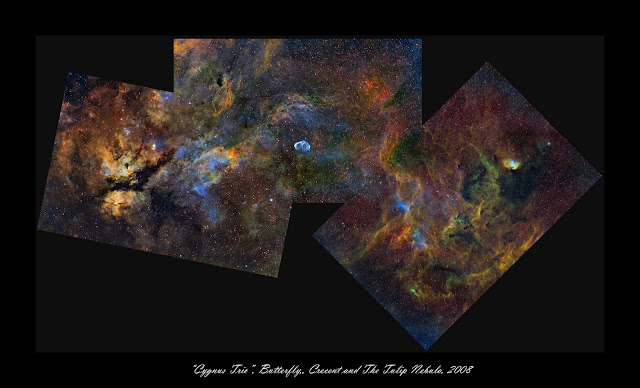 Hubble palette colors -
Hubble palette colors -
 Hubble palette colors -
Hubble palette colors -
The "Cygnus Trio", as I call a chain of objects in constellation Cygnus,
Butterfly nebula, Crescent nebula and finally the Tulip nebula are
located in Milkyway's dense star and gas field.
-
Image here is a mosaic from narrowband images, taken between 29.09-03.11. 2008.
Imaging information can be found in each images original posts.
(look at the right hand side menu, nebula)
The image spans area of 9 x 5 degrees.
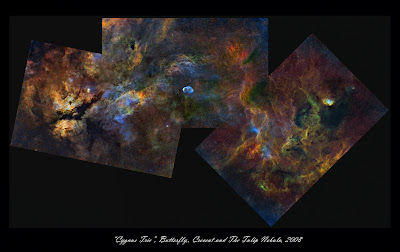 Here is a starless version to show the most complex nebulosity better.
Here is a starless version to show the most complex nebulosity better.The Tulip Nebula
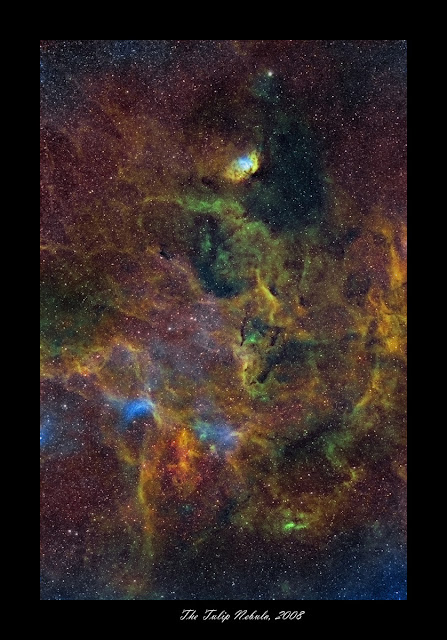
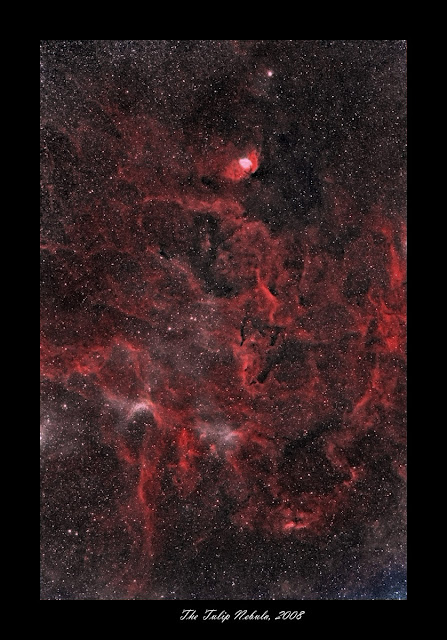
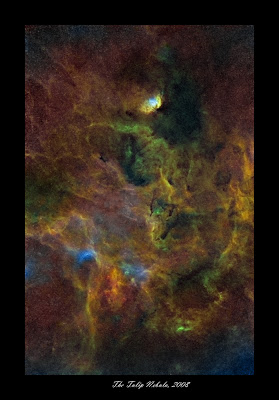
Last image for my Cygnus project is the Tulip nebula.
Image is a narrowband color image in different versions.
There is three version of this image here, first image is Hubble palette composition. S-II =RED, H-alpha = GREEN and O-III = BLUE
Second version is a "natural" color composition from narrowband channels, H-alpha 100% + 35%S-II = RED, O-III = GREEN and O-III 100% + 30%H-alpha = BLUE.
The third version is with suopressed stars to show the complex shapes of the nebula.
-
Imaging data:
Camera, QHY8 - Filters, Baader 7nm H-alpha, Baader 8,5nm O-III and Baader 8nm S-II - Optics, Tokina AT-X 300mm @ f2.8 -
Exposures, 7X 1200s H-alpha, 1 X 1200 O-III and 1X1200s S-II + flats and bias -
Guiding, LX200 GPS 12" + PHD-guiding and Lodestar
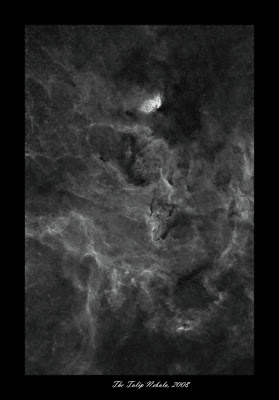
This image is a starless BW version.
It shows a three dimensional nature of this object very well, I think.
Editors' Choice

My Butterfly Nebula image was selected as an "Editors' Choice"
by Sky&Telescope magazine.

Monday, November 3, 2008
NGC6888, the "Crescent Nebula"
 NGC6888 in Hubble palette
NGC6888 in Hubble palette  "natural" color version
"natural" color version  H-alpha channel
H-alpha channel
I imagined the "Butterfly Neula" 29.09.2008.
At the time I left NGC6888 out of the field of view
to be able to better frame the Butterly nebula.
You can see part of the NGC6888 at lower right corner of the Butterly nebula image here:
-
At this time I wanted to capture the Crescent Nebula with the surraunding nebulosity.
NGC6888 is usually seen in longer focallenght images but I found wider field
as interesting doe the colorful and detailed nebula structure.
Imaging data: Camera, QHY8 - Filters, Baader 7nm H-alpha, Baader 8,5nm O-III and Baader 8nm S-II - Optics, Tokina AT-X 300mm @ f2.8 - Exposures, 4X 1200s H-alpha, 3 X 1200 O-III and 2X1200s S-II + flats and bias - Guiding, LX200 GPS 12" + PHD-guiding and Lodestar
-

I made a small mosaic from NGC6888 and the Butterfly Nebula.
The colorful "tale" of the Butterfly spans trough both images.
Subscribe to:
Posts (Atom)








